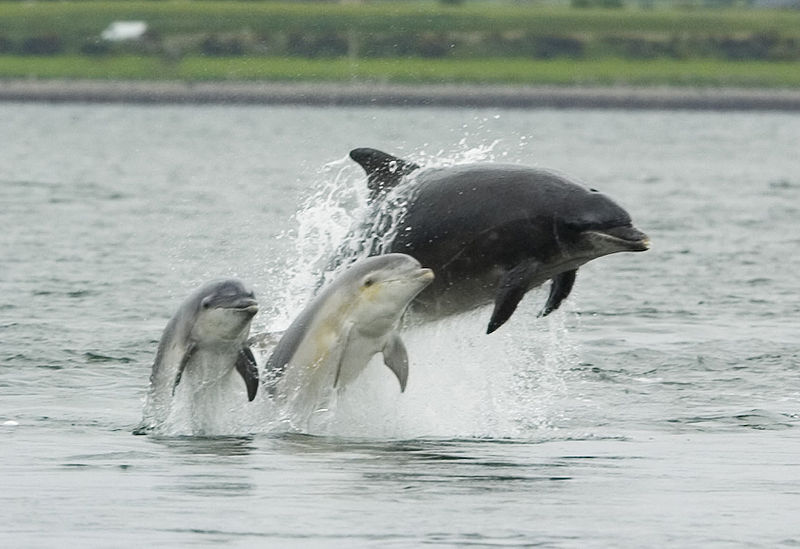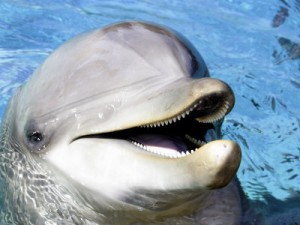Trivia question for Jun-17-2011
To honor the events scheduled for tomorrow which will be held in front of the Georgia Aquarium, Carter decided to write his trivia about these Dolphin’s as a way to bring light to an important issue. If your in the Atlanta area tomorrow from 10:00AM until Noon, please stop by and join all the great folks from “Free the Atlanta 11” as they are joined by Pete Bethune in an effort to raise awareness about the issue of Dolphin’s being kept in captivity. So good luck with Carter’s trivia and we hope to see you tomorrow:
These types of dolphins are the most highly studied of all whales and dolphins, both in the wild and in captivity. They possess a remarkable acoustic sense with which it ‘sees’ using sound, similar to bats.
possess a remarkable acoustic sense with which it ‘sees’ using sound, similar to bats.
These dolphins live in groups typically of 10–30 members, called pods, but group size varies from single individuals up to more than 1,000. Their diet consists mainly of forage fish. Dolphins often work as a team to harvest fish schools, but they also hunt individually. Dolphins search for prey primarily using echolocation, which is similar to sonar. They emit clicking sounds and listen for the return echo to determine the location and shape of nearby items, including potential prey. These dolphins also use sound for communication, including squeaks and whistles emitted from the blowhole and sounds emitted through body language, such as leaping from the water and slapping their tails on the water surface.
Dolphins are known to engage in complex play behavior, which includes such things as producing stable underwater toroidal air-core vortex rings or “bubble rings”. There are two main methods of bubble ring production: rapid puffing of a burst of air into the water and allowing it to rise to the surface, forming a ring; or swimming repeatedly in a circle  and then stopping to inject air into the helical vortex currents thus formed. The dolphin will often then examine its creation visually and with sonar. They also appear to enjoy biting the vortex-rings they’ve created, so that they burst into many separate normal bubbles and then rise quickly to the surface.
and then stopping to inject air into the helical vortex currents thus formed. The dolphin will often then examine its creation visually and with sonar. They also appear to enjoy biting the vortex-rings they’ve created, so that they burst into many separate normal bubbles and then rise quickly to the surface.
So here are Carter’s questions: Tell us what kind of dolphin this is and what their average gestation period is? Also, these guys are actually able to modify the contours of its pliable rubber-like skin to eliminate (_____) what, while swimming? As a bonus, tell us why we should be concerned about dolphin’s being kept in captivity?
Good Luck 😉
Answer:
Well, everyone was obviously busy with todays rally at the GA Aquarium but we still had someone answer the trivia correctly. Congratulations to Sonya from Guam for being the first with the correct answer. The dolphins we featured are the Bottlenose Dolphins. Bottlenose dolphins, are the most common and well-known members of the family of oceanic dolphins. Recent molecular studies show the genus contains two species, the common bottlenose dolphin and the Indo-Pacific bottlenose dolphin, instead of one. They inhabit warm and temperate seas worldwide.
The average gestation period is about 10 to 12 months. These guys actually have the ability to modify the contours of its pliable rubber-like skin to eliminate any local areas of turbulence that develops while swimming. And the answer to the bonus question is that dolphins are use to swimming over 100-miles each day and often dive as deep as 300-feet. Most aquariums only provide a small 12-foot by 24-foot enclosure which sadly houses up to a dozen of these poor creatures. They are forced to learn tricks which are meant to entertain humans and does little to ensure the comfort of the species. Furthermore, most aquariums pay upwards of 100,000 dollars for a single specimen, providing they are flawless in appearance and healthy looking. Often they purchase these animals from unreputable companies who have zero regard for the well-being of the dolphin, and they end up slaughtering the ones they catch which are deemed not perfect enough for the aquarium market.
Imagine if someone treated us humans the same way. Anyway, there are countless reasons we should all be concerned about the fact that so many dolphins are being caught for captivity. We encourage you to do your own research on the subject and at-least arm yourself with the facts before you decide to spend your money at another aquarium. Anyway, here is more on these smart mammals. Bottlenose Dolphins
We thank everyone for their support at the rally earlier and thanks also for playing along 😉

